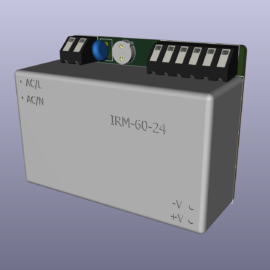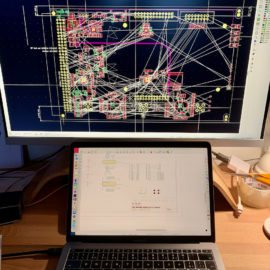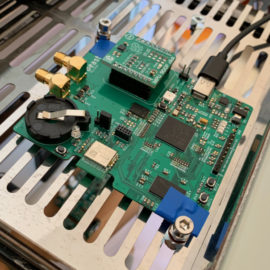🔋🔋🔋𝐔𝐧𝐝𝐞𝐫𝐬𝐭𝐚𝐧𝐝𝐢𝐧𝐠 𝐭𝐡𝐞 𝐊𝐞𝐲 𝐃𝐢𝐟𝐟𝐞𝐫𝐞𝐧𝐜𝐞𝐬 𝐁𝐞𝐭𝐰𝐞𝐞𝐧 𝐃𝐂-𝐃𝐂 𝐂𝐨𝐧𝐭𝐫𝐨𝐥𝐥𝐞𝐫𝐬 𝐚𝐧𝐝 𝐂𝐨𝐧𝐯𝐞𝐫𝐭𝐞𝐫𝐬
⚡ When working with power supply designs, you’ll often come across two terms: DC-DC controllers and converters. While they may sound similar, they serve different purposes and have unique characteristics. Let’s break down the differences in an easy-to-understand format.
🎛️ 𝐃𝐂-𝐃𝐂 𝐂𝐨𝐧𝐭𝐫𝐨𝐥𝐥𝐞𝐫𝐬:
1️⃣ Controllers act as a „brain“ for the power supply, managing the conversion process by controlling the external power components.
2️⃣ They require an external power switch (MOSFET) and sometimes an external inductor or diode, which gives you flexibility in selecting components based on your specific requirements.
3️⃣ Controllers are usually employed in custom solutions and more complex power supply designs, providing greater design flexibility.
🔌 𝐃𝐂-𝐃𝐂 𝐂𝐨𝐧𝐯𝐞𝐫𝐭𝐞𝐫𝐬:
1️⃣ Converters are essentially „plug-and-play“ devices that handle the entire conversion process, containing the control circuitry and power components in one package.
2️⃣ They offer a more compact and integrated solution, with fewer external components needed.
3️⃣ Converters are typically used in simpler designs and applications where space constraints or ease of implementation are critical factors.
🧠 Key Takeaways:
𝐂𝐨𝐧𝐭𝐫𝐨𝐥𝐥𝐞𝐫𝐬 offer greater design flexibility but require more external components and a more in-depth understanding of power supply design.
𝐂𝐨𝐧𝐯𝐞𝐫𝐭𝐞𝐫𝐬 provide a simpler, more compact solution with fewer external components needed but may have limitations in terms of customization.
💡 Next time you’re working on a power supply design, keep these differences in mind to choose the right solution for your specific needs.



